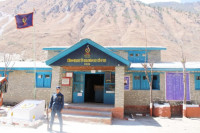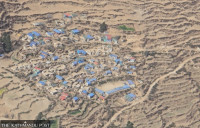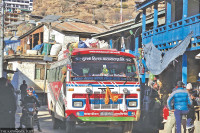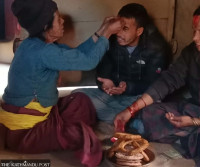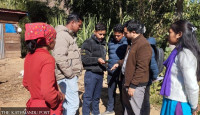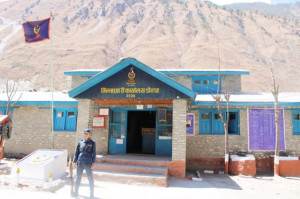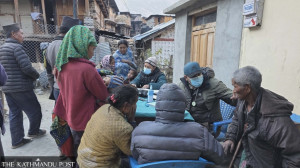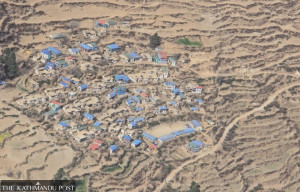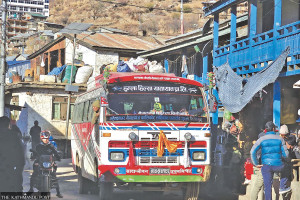Karnali Province
Humla’s Tilgaun residents decide to leave ancestral land for good
Reeling from May’s flooding and lack of support, villagers decide to move out by December.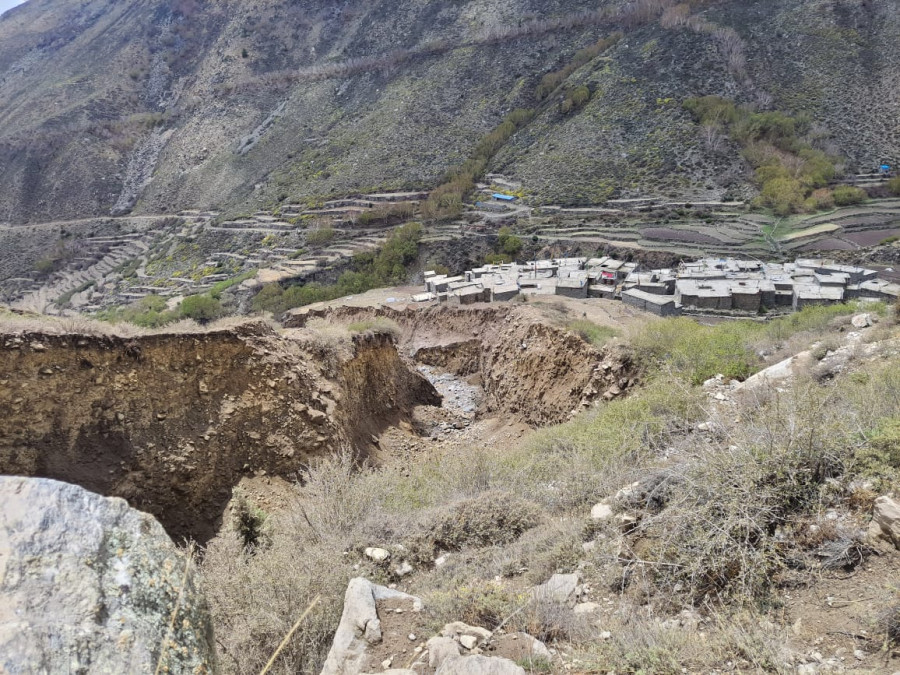
Tripti Shahi
The residents of Tilgaun, a remote village in ward 6 of Namkha Rural Municipality of Humla district, are preparing to permanently abandon their ancestral land following the devastating flash flood and dry landslides apparently triggered by a rare ‘thermokarst’ on May 15.
The villagers, traumatised by recurring natural disasters and deprived of basic services, have decided to migrate en masse to Kathmandu and other places by the end of this year. According to Chhiring Chhimel Tamang, a local resident of Tilgaun, the villagers held a meeting recently and unanimously agreed to leave the village by mid-December.
Out of 40 households, only 23 families remain in Tilgaun now. They have been languishing in makeshift tents in a meadow across the village after the devastating flood. According to the locals, a meeting attended by 45 individuals decided to abandon the village. “We’ve been living in makeshift tents on higher ground ever since the flood. Every morning we go down to work at our damaged homes, but by evening, we return to sleep under tarpaulins,” said Chhiring.
The flash flood displaced 32 individuals from 18 households in Tilgaun. The flood washed away five wooden bridges over the Tilchung stream, destroyed two houses and severely damaged a 15-kilowatt micro-hydropower plant. An irrigation canal covering 400 ropani (20.35 hectares) of farmland was swept away and drinking water pipelines were also broken.
The incident was caused by ‘thermokarst’—a rapid ground collapse resulting from the thawing of permafrost and destabilisation of glacial areas. A field study by a team of experts identified three glacial lakes at an altitude of 5,350 metres above Tilgaun, raising further alarm about future disasters.
The study team comprising Sushil Kumar Shrestha, senior divisional engineer of the National Disaster Risk Reduction and Management Authority, Shiva Kumar Baskota, senior divisional geologist of Department of Mines and Geology and Sauhandra Joshi, hydrologist of the Department of Hydrology and Meteorology, visited the affected area following the disaster.
The local people of Tilgaun expressed their concerns about the lackadaisical response of the government authorities. Despite visits by some government officers, no concrete plan has emerged to protect the settlement.
Chief District Officer Narayan Pandey confirmed that although two technical teams assessed the damage, there has been no follow-up from the central government. “The damage did not directly affect all houses, so some families briefly returned home, but most remained displaced,” Pandey said.
The Limi valley—comprising Til, Halji and Jang villages—was incorporated into ward 6 of Namkha Rural Municipality while federating the country in 2015. Spread across the remote northwestern frontier of Nepal bordering Tibet, the valley remains one of the most isolated human settlements in the country. Reaching from one village to another takes over four hours on foot, and the district headquarters Simkot is several days away.
This is not an isolated case in Tilgaun. Jang village, which had 63 households 15 years ago, now has just one family remaining. The rest have migrated to Kathmandu, Nepalgunj, or even across the border to China’s Taklakot. “Until two years ago, there were 17 houses in Jang. Last year, everyone left except for one family,” said Paljor Tamang, the chairman of ward 6 of Namkha Rural Municipality.
Jang’s only primary school, Bhrikuti Basic School, shut down five years ago due to a complete absence of children. “With no access to education, healthcare, or markets, survival became impossible,” said Kunchok Sewang Lama, who migrated from Jang. “In winter, even the foot trails close for six months and even minor medical issues can turn fatal without helicopter rescue, which we cannot afford. So the villagers left the village (Jang),” he said.
The trend of depopulation has now spread to Halji, the largest settlement in Limi, famous for its 1,200-year-old monastery. This year alone, three households have left Halji, citing disaster risks and lack of services. “Historically, Halji residents resisted leaving because of the cultural importance of the ancient monastery. But after the recent disasters and lack of amenities, even the Halji locals started leaving the settlement,” said the ward chief.
As per the national census 2021, total population of ward 6 is 812, a sharp decline from 904 in 2011. Ward Chairman Tamang said the actual number of permanent residents now is closer to 400, with many families seasonally residing in Taklakot or urban centers like Kathmandu and Nepalgunj.
Livelihood in Limi traditionally revolved around sheep herding and cross-border trade in Taklakot. However, frequent natural disasters, extreme isolation, and the virtual collapse of local infrastructure have accelerated the outmigration.
“Once Til is abandoned, Limi valley’s entire habitation will effectively vanish. We tried to convince villagers to stay, but no basic safety measures were introduced. Without urgent intervention from the provincial and federal governments, Limi’s centuries-old settlements will soon be history,” said ward chairman Tamang.




 5.05°C Kathmandu
5.05°C Kathmandu
